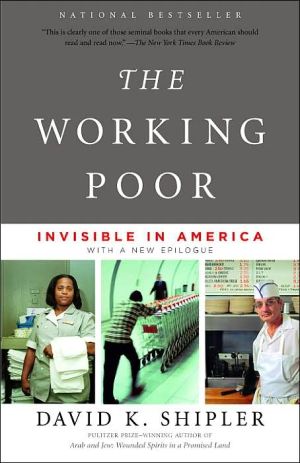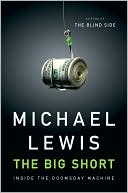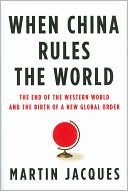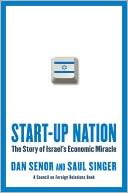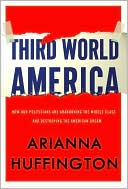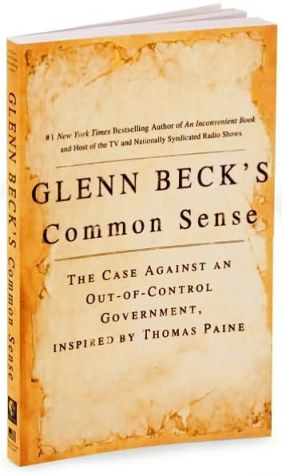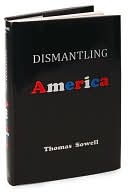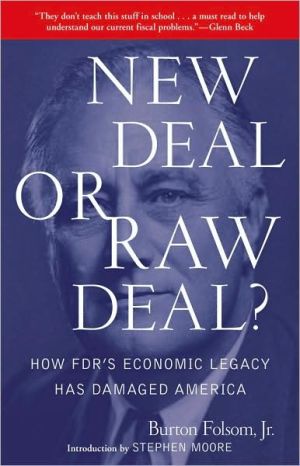The Working Poor: Invisible in America
“Nobody who works hard should be poor in America,” writes Pulitzer Prize winner David Shipler. Clear-headed, rigorous, and compassionate, he journeys deeply into the lives of individual store clerks and factory workers, farm laborers and sweat-shop seamstresses, illegal immigrants in menial jobs and Americans saddled with immense student loans and paltry wages. They are known as the working poor.\ They perform labor essential to America’s comfort. They are white and black, Latino and...
Search in google:
No one who works hard in America should be poor, says journalist and author Shipler, but he found many of them all across the country, and delves as deeply into the cause and effect of their condition as they would allow. Some he has followed for years now. One finding is that the rise and fall of the nation's official economy has almost no impact on them; another is that they have no time for rage. Annotation ©2004 Book News, Inc., Portland, OR The Washington Post The Working Poor and Barbara Ehrenreich's Nickel and Dimed, a book that eloquently covers some of the same ground, should be required reading not just for every member of Congress, but for every eligible voter. Now that this invisible world has been so powerfully brought to light, its consequences can no longer be ignored or denied. — Eric Schlosser
Chapter One \ Money and Its Opposite \ You know, Mom, being poor is very expensive. —Sandy Brash, at age twelve \ Tax time in poor neighborhoods is not April. It is January. And “income tax” isn’t what you pay; it’s what you receive. As soon as the W-2s arrive, working folks eager for their checks from the Internal Revenue Service hurry to the tax preparers, who have flourished and gouged impoverished laborers since the welfare time limits enacted by Congress in 1996. The checks that come from Washington include not only a refund of taxes withheld, but an additional payment known as the Earned Income Tax Credit, which is designed to subsidize low-wage working families. The refunds and subsidies are sometimes banked for savings toward a car, a house, an education; but they are often needed immediately for overdue bills and large purchases that can’t be funded from the trickle of wages throughout the year.\ Christie, a child-care worker in Akron, earned too little to owe taxes but got $1,700 as an Earned Income Credit one year, which enabled her to avoid the Salvation Army’s used-furniture store and instead buy a new matching set of comfortable black couches and loveseats for her living room in public housing.\ Caroline Payne’s check went for a down payment on her house in New Hampshire. “I used my income tax and paid a thousand down,” she said proudly. When she sold it five and a half years later and her daughter lent her money to rent a truck for her move, she planned to pay her back “when I get my taxes.”\ “I’m waitin’ for my income tax to come in so I can pay my real estate taxes,” said Tom King, a single father and lumberjack who lived in a trailer on his own land.\ Debra Hall, who had started at a Cleveland bakery, was keen with anticipation after filing her first tax return. “I’ll get $3,079 back! What am I gonna do with it? Pay all my bills off,” she declared, “and I haven’t had anything new in the house. Do some good with it, that’s for sure. Minor repairs on my car. The bills are first, for my credit [rating], to get all my back debts paid. It will be well spent.”\ The Earned Income Tax Credit is one of those rare anti-poverty programs that appeal both to liberals and conservatives, invoking the virtue of both government help and self-help. You don’t get it unless you have some earned income, and since its payments are linked to your tax return, you don’t get it unless you file one. That leaves out low-wage workers—especially undocumented immigrants—who get paid under the table in cash and think they’re better off avoiding the IRS. By filing, however, they would end up ahead, because they’d get to keep everything they earned and would receive a payment on top of that. The benefits kick in at fairly high levels—at earnings of less than $33,692, for example, for a worker who supported more than one child in 2003. At the lower income levels, the Earned Income Tax Credit can add the equivalent of a dollar or two an hour to a worker’s wage.\ Enacted in 1975, the program was expanded under Presidents Reagan, Bush, and Clinton, and in 2003 paid more than $32 billion to 18 million households. Treasury officials worry about erroneous claims, honest or fraudulent, which may rise to 27 to 32 percent of the total.1 On the other hand, an estimated 10 to 15 percent of those eligible don’t file for it,2 partly because employers and unions often don’t tell workers that it exists. The presidents of two local unions in Washington, D.C., for example, one representing janitors and the other parking garage attendants, had never heard of the Earned Income Tax Credit until I mentioned it to them. And I have not yet come across a single worker or boss who knew that with a simple form called a W-5, filed with the employer, a low-wage employee could get some of the payments in advance during the year. When I mentioned the W-5 to Debra Hall and she then asked at her bakery, the woman who handled the payroll waved her away impatiently and said she knew nothing about it. Later, the tax preparer told Debra it was better just to wait and get the payment in one lump sum after she filed her return.\ It sure is better—if you’re the preparer. With cunning creativity, the preparers have devised schemes to separate low-wage workers from as much of their refunds and Earned Income Credits as feasible. The marvel of electronic filing, the speedy direct deposit into a bank account, the high-interest loan masquerading as a “rapid refund” all promise a sudden flush of dollars to cash-starved families. The trouble is, getting money costs money.\ The preparers operate from sleazy check-cashing joints and from street-level outposts of respectable corporations. They do for a hefty fee what their clients could do for themselves for free with the math skills and the courage to tackle a 1040, or with a computer and a bank account to speed filing and receipt. But most low-wage workers don’t have the math, the courage, or the computer, and many don’t even have the bank account. They are so desperate for the check that they give up a precious $100 or so to get everything done quickly and correctly. “You get so scared,” said Debra Hall, who paid $95 to have her simple return done after ending twenty-one years of welfare. “I don’t know why it’s so scary, but I’d rather have it done right the first time.”\ She was probably wise, because another disadvantage of being poor is that you’ve been more likely since 1999 to face an audit by the IRS. In that year, 1.36 percent of the returns filed by taxpayers making under $25,000 were audited, compared with 1.15 percent of those making $100,000 or more. The scrutiny was instigated by Republican congressional leaders who feared abuses of the Earned Income Tax Credit. In the face of bad publicity, the IRS shifted the balance in 2000 by auditing 0.6 percent of those under $25,000 versus 1.0 percent of those over $100,000. Thereafter, the audit rate tilted back and forth, to .86 and .69 percent, respectively, in 2001, then to .64 and .75 in 2002.3 In other words, as the IRS lost enforcement personnel, it dramatically reduced its scrutiny of well-to-do taxpayers, whose returns were once audited at the rate of 10 percent. This despite the fact that audits at the upper levels of income naturally tend to recover more dollars in lost revenue.\ Evon Johnson never dared do another return herself after the IRS charged her $2,072 in taxes, penalties, and interest. Newly arrived from Honduras, she was working from 5 a.m. for a cleaning service in Boston that never withheld taxes and never sent her a W-2. She didn’t know they were supposed to do either. “I did my taxes, I fill it out, fine,” she said. But not so fine, evidently. “Three years after or four years after, IRS contact me saying that I owe them . . . like, $2,072. ‘Why do I owe you?’ And they say: because I didn’t declare my taxes. I say I did. . . . They say no. . . . I sent them a letter saying I was sending them $1,072 I think it was, ’cause I didn’t have no money at the time, and I was going to make small installments for the rest of the money. . . . You know what they did? I had a bank account, and they took the money from my bank account—every penny I had.” Ever since, she has happily paid $100 a year to a tax preparer, $100 a year for peace of mind. “I don’t want the IRS back on me,” she explained. “He do it and he sign it and put everything, so if any mistake, he gonna be the one who will have to deal with them.”\ By the end of February, H&R Block’s storefront office on a dismal stretch of Washington’s 14th Street looked like a well-used campaign headquarters a week after Election Day. Most computer screens were dark, and the place was quiet and cavernous. All the desks were empty but one, occupied by Claudia Rivera, who used to prepare returns without charge at a library in Virginia. She and the manager, Carl Caton, didn’t have much to do now that the rush had passed, so they were happy to sit at a keyboard and explain.\ Each form the taxpayer needed carried a fee: $41 for a 1040, $10 for an EIC (the Earned Income Credit), $1 for each W-2, and so on. Electronic filing cost another $25. So a simple return with two W-2s filed electronically would run $78. But it didn’t stop there. Block had a smorgasbord of services for people who lived on the edge. If you had no bank account, your refund could be loaded onto an ATM card that charged $2 per withdrawal. Or a temporary account could be opened into which the IRS payment could be deposited for a fee of $24.95. If you were enticed by Block’s offer of a “rapid refund” and wanted a check in a day or two, you paid H&R Block an additional $50 to $90, depending on the amount you were getting. The fee on 14th Street could be as much as $50 on a $200 refund, up to $90 for $2,000 or more.4\ This was actually a loan, and for a very short time. Filing electronically usually gets you a check in two and a half weeks, according to the IRS, and five days sooner if it’s deposited directly into a bank account. At the most, then, the “rapid refund” loan, issued a day or two after filing, would run about fifteen days, which made the $90 fee on a $2,000 payment equivalent to an annual interest rate of 108 percent. At the least, the loan could run as little as four days, propelling the annualized rate to 410 percent on $2,000, and 2,281 percent on $200. (The highest percentage is incurred if the timing occurs perfectly: the return is filed by the IRS’s weekly deadline of noon Thursday, the loan check is not issued until after banks close Friday, the taxpayer can’t put it into his account until Monday, and the IRS is fast enough to deposit the refund directly with the lending bank the following Friday.)5\ After a spate of lawsuits, a federal judge in Norfolk ordered Block to stop using the misleading term “rapid refund” in advertising loans, but Block continued with the ads by redefining “rapid refund” as a reference to electronic filing only. The company called its loan program a “refund anticipation loan,” a distinction lost on many of the low-wage workers who ventured into Block offices in search of a rapid refund. In 2000 such loans went to 4.8 million taxpayers.\ Among all the working people I interviewed who used the loan service, not one understood the terms or the options. Hector and Maribel Delgado, who earned about $28,000 a year picking and packing vegetables in North Carolina, were stunned when I sat with them in their trailer, looked over their tax return, and explained how it all worked. They had paid Block $109 to prepare their return, file it electronically, and give them an advance on their payment from the IRS of $1,307.05. The form they had signed disclosed a finance charge of 69.888 percent annually, but they had not understood it. Even as Block employees presented a contract in fine print, they were trained to avoid the word “loan,” and say “two-day refunds” instead, a Maryland judge found in hearing a lawsuit on the lending practices. And the refund loans were lucrative enough to provide 8 percent of Block’s entire profits in 1999, mainly because a Block subsidiary owned a 49.99 percent interest in the loans, made by Household Bank.\ Something else illicit happened to the Delgados in the Block offices. Although they filed electronically in January, a time when the IRS promises checks within a couple of weeks, “We were told we’d have to wait six to eight weeks,” Maribel said. This was patently false. “We needed the money to pay bills,” she explained. “We send one part to Mexico, another part to here. We usually send $100 every two weeks to Mexico. We have a big family.”\ In 2000, after facing a decade of class-action lawsuits alleging misleading lending practices, H&R Block agreed to a $25 million settlement without admitting any wrongdoing. The only practice the company changed was to present the federally required truth-in-lending disclosures earlier in the process, according to a spokeswoman. Do employees at least explain the terms verbally? “A lot of it depends on questions customers ask,” she said. “If they ask questions, preparers are supposed to answer.” Many customers simply do not know what questions to ask.\ Poverty is like a bleeding wound. It weakens the defenses. It lowers resis- tance. It attracts predators. The loan sharks operate not only from bars and street corners, but also legally from behind bulletproof glass. Their beckoning signs are posted at some 10,000 locations across the country: “Payday Loans,” “Quick Cash,” “Easy Money.” You see them in check-cashing joints and storefront offices in poor and working-class neighborhoods. They have organized themselves into at least a dozen national chains, and they charge fees equivalent to more than 500 percent annualized interest.\ They also provide a much needed service. Say you’re short of cash, and the bills are piling up, along with some disconnection notices. Payday is two weeks away, and your phone and electricity will be shut off before then. The guy at the local convenience store, who has a booth for cashing checks, throws you a lifeline. If you need $100 now, you write him a check for $120, postdated by two weeks. He’ll give you the $100 in cash today, hold your check until your wages are in your bank account, and then put the check through. Or you can give him the $120 in cash when you get it, and he’ll return your check. Either way, 20 percent interest for two weeks equals 1.428 percent a day, or 521 percent annually.\ If you’re still stuck after payday, if your paycheck doesn’t quite cover your needs, or if your check for $120 bounces, no problem. The guy behind the bulletproof glass will gladly roll over your loan—for another $20. This pattern prevails in Illinois, for example, where state examiners found that rollovers made up 77 percent of all payday loan transactions. The average customer had ten such renewals, which meant paying fees totaling up to twice the amount borrowed.6 Eventually, you may have to borrow from another payday loan merchant to pay the fees at the first. And so on and on and on.
PrefaceIntroduction: At the Edge of Poverty3Ch. 1Money and Its Opposite13Ch. 2Work Doesn't Work39Ch. 3Importing the Third World77Ch. 4Harvest of Shame96Ch. 5The Daunting Workplace121Ch. 6Sins of the Fathers142Ch. 7Kinship174Ch. 8Body and Mind201Ch. 9Dreams231Ch. 10Work Works254Ch. 11Skill and Will285Notes301Index307
\ From the Publisher"This is clearly one of those seminal books that every American should read and read now." --The New York Times Book Review\ \ " An essential book. . . . It should be required reading not just for every member of Congress, but for every eligible voter." --The Washington Post Book World\ “Sensitive, sometimes heart-rending . . . . A vivid portrait of the struggle of the working poor to acquire steady, decently paid employment.” –Commentary\ "Insightful and moving. . . . Shipler writes with enormous grace [and] he captures the immense frustration endured by the working poor as few others have." --The Nation\ "Welcome and important. . . . Shipler manages to see all aspects of poverty--psychological, personal, societal--and examine how they're related. . . . There is much here to ponder for conservatives and liberals alike." —The Seattle Times\ \ \ \ \ \ \ The New York TimesAs a witness Mr. Shipler is indefatigable. Interviewing cashiers and seamstresses, burger flippers and migrant workers a dozen or more times, he has gotten them to open up and share the grim realities of their lives … by exposing the wretched condition of these invisible Americans, he has performed a noble and badly needed service. — Michael Massing\ \ \ The Washington PostThe Working Poor and Barbara Ehrenreich's Nickel and Dimed, a book that eloquently covers some of the same ground, should be required reading not just for every member of Congress, but for every eligible voter. Now that this invisible world has been so powerfully brought to light, its consequences can no longer be ignored or denied. — Eric Schlosser\ \ \ \ \ Publishers WeeklyThis guided and very personal tour through the lives of the working poor shatters the myth that America is a country in which prosperity and security are the inevitable rewards of gainful employment. Armed with an encyclopedic collection of artfully deployed statistics and individual stories, Shipler, former New York Times reporter and Pulitzer winner for Arab and Jew, identifies and describes the interconnecting obstacles that keep poor workers and those trying to enter the work force after a lifetime on welfare from achieving economic stability. This America is populated by people of all races and ethnicities, whose lives, Shipler effectively shows, are Sisyphean, and that includes the teachers and other professionals who deal with the realities facing the working poor. Dr. Barry Zuckerman, a Boston pediatrician, discovers that landlords do nothing when he calls to tell them that unsafe housing is a factor in his young patients' illnesses; he adds lawyers to his staff, and they get a better response. In seeking out those who employ subsistence wage earners, such as garment-industry shop owners and farmers, Shipler identifies the holes in the social safety net. "The system needs to be straightened out," says one worker who, in 1999, was making $6.80 an hour-80 cents more than when she started factory work in 1970. "They need more resources to be able to help these people who are trying to help themselves." Attention needs to be paid, because Shipler's subjects are too busy working for substandard wages to call attention to themselves. They do not, he writes, "have the luxury of rage." 40,000 first printing. (Feb. 6) Copyright 2003 Reed Business Information.\ \ \ \ \ KLIATTWhen customers are served by associates in a store or restaurant, enter a freshly cleaned hotel room, or choose freshly picked foods at the grocery store, they benefit from the labor of the working poor. Shipler has interviewed persons of many colors and ethnicities to put together a picture of what their lives are like. He notes the effect on their lives of kinship groups, corporations, social attitudes, emergencies, job training programs, family dysfunction, foreign competition, and other impacts. He is chary of theories and ideologies that would put them in neat categories and of judgments that assign blame for their poverty. He looks at the decisions individuals have made (or not made), and the policies and blocks, public and private, that bar access to better living standards. The book is well written, the anecdotes revealing; Shipler does better than most at putting a human face on the statistics that list those who live on the lowest wages in the US. KLIATT Codes: SA—Recommended for senior high school students, advanced students, and adults. 2004, Random House, Vintage, 329p. notes. index., Ages 15 to adult. \ —Edna Boardman\ \ \ \ \ Library JournalA book by a Pulitzer Prize winner (Arab and Jew), with an announced first printing of 40,000 copies by a prestigious trade publisher and prepub kudos by Bill Bradley and Robert Reich, is sure to capture a certain amount of media attention. If this happens, it will be well deserved. Shipler is informed and impassioned about the plight of the surprisingly diverse and numerous Americans who work but still walk the official poverty line. This conundrum is complex and rife with interlocking problems, including dead-end jobs that offer little or no healthcare benefits and depressing home and workplace environments. Not the least of these burdens is the widely held belief that poverty is related to indolence. Shipler takes a many-faceted view of this Sisyphean bind, and in his final chapter, "Skill and Will," he offers some thoughts on solutions. His writing style is highly effective and often moving, such as when he notes that our forgotten wage earners engage in "a daily struggle to keep themselves from falling over the cliff." Recommended for all collections. [Previewed in Prepub Alert, LJ 10/1/03.]-Ellen D. Gilbert, Princeton, NJ Copyright 2004 Reed Business Information.\ \ \ \ \ Kirkus ReviewsA damning report on poverty in America. In The Mystery of Capital (2000), economist Hernando de Soto wondered why the Third World's poor lack the fungible assets that their American counterparts hold-assets that keep them from being, well, so poor. Pulitzer Prize-winning journalist Shipler (A Country of Strangers, 1997) reveals that this may be illusory: for many of the men and women he portrays here, any property of worth has been mortgaged and remortgaged, and when it is sold, often in a hurry and for less than it's worth, any proceeds go to paying down the mountains of debt that the poor accumulate. These American poor-natives and immigrants alike-"suffer in good times and bad," writes Shipler. They are sometimes the victims of addiction, ignorance, and bad choices; in most instances, however, the working poor are single mothers and single wage-earners with several children and few options. The larger culture misunderstands the causes of poverty, Shipler argues, "and is therefore uncertain about the solutions," though the solutions are there: in a surprising moment, a Wal-Mart manager in rural New England reveals that the store could easily afford to pay its employees two dollars an hour more. (One of his interview subjects made $6 an hour in a Vermont factory in the mid-1970s; 25 years later, now a Wal-Mart clerk, she was up to $6.80.) Traveling from big box stores to Los Angeles sweatshops to farms to public-housing projects, Shipler offers memorable portraits of the women and men who figure as afterthoughts in just about every politician's vision of the American future-even though, Shipler notes, had the poor voted, Al Gore would have been swept into office in 2000: "an upsurge inlow-income numbers would have overcome even Florida's biased registration and balloting system." A sobering work of investigation, as incisive-and necessary-as kindred reports by Michael Harrington, Jacob Riis, and Barbara Ehrenreich. First printing of 40,000. Agency: ICM\ \
